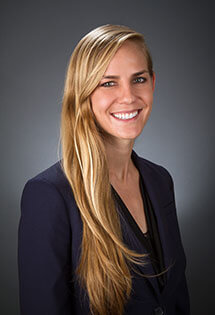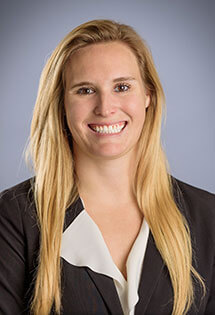

‘Tis the Season of Charitable Giving and Tax Planning
Ashley Copp, CFA, Wealth Management Advisor | Brooke Boone, Wealth Management Associate | November 26, 2016
With the holidays and year end quickly approaching, ’tis the season of detailed tax planning and gift giving! While tax planning and gift giving don’t always get a seat at the same strategy table, we encourage clients to consider their charitable endeavors as a critical piece of the overall tax and financial planning process. A yearend conversation with your CPA and Weatherly provides an excellent opportunity to maximize efficiency while accomplishing charitable goals. In addition, many clients utilize charitable planning as the beginning steps of the family conversation with their heirs, specifically to communicate family values and begin the legacy planning process. Giving funds to those less fortunate or causes you are passionate about, while capturing a tax benefit offers a winning combination for our clients.
We have outlined two efficient approaches below:
Donor Advised Fund
A Donor Advised Fund (DAF) is a philanthropic account that allows a donor to make charitable contributions, receive an immediate tax write-off and subsequently grant funds out to charities over time. DAFs are available for clients at most community foundations and large brokerage firms. Weatherly can facilitate opening a DAF at either type of institution and will assist in selecting securities for donation.
What can be donated?
The donor can of course contribute cash, however, one of the main benefits of a donor advised fund is your ability to contribute appreciated securities, both publicly traded and some privately held securities.
- The donor receives a deduction equal to the fair market value (FMV) of the securities on the day the shares are contributed to the DAF and does not have to pay tax on the unrealized capital gain.
- The contribution is considered an irrevocable gift and cannot be reclaimed by the donor, this allows the donor to claim the FMV as a deduction on their tax return in the current tax year.
- The securities are immediately converted to cash by the custodian and held in the account awaiting the donor’s instructions.
- The DAF provides an opportunity to decrease a low basis concentrated position while accomplishing charitable donation goals.
Example here: https://www.fidelitycharitable.org/giving-strategies/tax-estate-planning/appreciated-securities.shtml
Investing the funds in a DAF
- Once the donation is made to the DAF, the donation can grow tax- free. Custodians typically offer model portfolios invested in exchange traded funds or mutual funds at reasonable management fees. The end charities benefit from more dollars available to the donor to grant out.
- Once over a certain dollar amount many custodians allow the funds to be managed by an Advisor with broader investment choices – individual stocks and bonds, mutual funds, exchange traded funds, alternatives etc. Fees and threshold vary per custodian.
Estate and Legacy planning
- The DAF offers a convenient way to leave funds to charity in your estate. Instead of naming specific charitable organizations in your estate plan you can simply name the DAF – during your lifetime if you want to change the dispersion of funds to the charities listed or change the selected organizations receiving funds you can make this edit simply via the DAF at no cost versus paying an attorney to amend your estate documents.
- The donor can also select a successor on the DAF so the account can continue under direction of the selected individual after the donor has communicated their charitable values and vision for the funds.
- In our experience, clients find this vehicle an excellent way to start the family conversation surrounding values, charitable goals, wealth transfer, and legacy planning. A discussion with heirs and other family members to collectively select causes and organizations that represent family values is a meaningful exercise for teamwork and family unity. This may make the transition to a broader conversation regarding estate planning smoother if and when it is appropriate for your family. See a link to Weatherly’s family conversation assessment card here.
Example #1: Concentrated Position – Donating Stock versus Cash
A couple in their early 60’s both worked for a technology company, ABC inc., for 20 years. While working they received compensation via incentive stock options that they exercised over time. They now have a concentrated position of the company stock equal to 30% of their overall net worth and would like to diversify out of the position over time to decrease risk as they near retirement. The shares have a very low cost basis, and therefore large capital gain tax if they were to liquidate shares. They are both still working and adding to their portfolio via 401(k) and Trust contributions annually. They are charitably inclined and donate on average $25,000 annually to organizations supporting foster youth programs. They have been completing these donations with cash from annual income.
Mike and Susan’s advisor recommends they open a DAF and utilize the ABC Inc. stock to complete their annual gifting. They will transfer shares from their Trust account to the DAF and receive a deduction on their tax return equal to the Fair Market Value of the stock. The shares will be immediately converted to cash and Mike and Susan can grant out the funds to the charities they regularly support.
They did not pay any capital gains tax and can now add the $25,000 cash they would have used for the charitable donation to their Trust account for investment in other sectors, ensuring diversification over time.
Example #2: Small Business Sale – Frontloading a DAF
A couple, Bob and Jenny, started a successful company in their 30’s. They have worked hard over the last 25 years to build a profitable business. They have now decided they’d like to move on to other endeavors and spend more time with their family. They have successfully negotiated a sale of their business, however they will incur a large tax bill this year due to the payout. They have consistently donated $20,000 annually to various charities. They would like to continue working after the business is sold to stay engaged and earn income but at a lower time commitment. They have consulting opportunities but are unsure of their income levels and if their earnings will allow the same level of donations going forward.
Bob and Jenny’s advisor recommend they open a DAF and frontload the account. They will contribute $100,000 of appreciated securities to the DAF and receive a deduction on their tax return to help offset their very large tax bill this year. They are able to grant the funds out to charities over the next 5 years at their regular $20,000 amount without any impact to the income that they earn after the business sale. They can also replace the donated funds with the business sale proceeds and reinvest the monies.
They did not pay any capital gains tax on the appreciated stock transferred to the DAF, they have guaranteed their regular donations for the next five years, and they maximized the tax benefit by capturing the deduction in this tax year.
Key Tax Planning Details
Taxpayers can deduct charitable donations up to a percentage of their adjusted gross income in a given tax year. The percentage varies depending on the type of asset donated:
|
Type of Asset |
Percentage of Adjusted Gross Income |
| Publicly Traded Securities |
30% of AGI |
| Non Publicly Traded Securities |
30% of AGI |
| Cash |
50% of AGI |
*www.irs.gov
Charitable Carryover
In the event that a taxpayer completes a charitable donation in excess of the AGI thresholds, the excess charitable donation can be carried over for up to 5 years. This excess amount cannot exceed 50% of the taxpayer’s adjusted gross income (AGI) for each tax year claiming the carryover.
Phase Outs
Itemized deductions on Schedule A of the 1040 are subject to phase outs depending on compensation levels, detailed in Section 68 of the Internal Revenue Code. The tax benefit of deductions can be reduced if the tax payer is over certain thresholds.
The Section 68 phase-out is equal to the lesser of 80% of total itemized deductions or 3% of the taxpayer’s AGI in excess of the thresholds below. The phase-out applies to taxpayers whose 2016 adjusted gross income (AGI) exceed the following thresholds:
- Married filing a joint return: $311,300
- Filing as single: $259,400
- Filing as head of household: $285,350
- Married filing a separate return: $155,650
http://www.donorstrust.org/tax-estate-planning/itemized-deduction-phase-out/
Required Minimum Distribution (RMD) Direct Rollover to Charity
Another high impact strategy for clients over age 70 ½ who are taking their required minimum distributions from their IRA’s is a qualified charitable distribution. The donor is able to shift a portion of their RMD, up to $100,000 per year, directly to charities of their choosing. The funds sent to charitable organizations are then not included in the individuals adjusted gross income, therefore reducing taxable income while still satisfying the required minimum distribution mandated by the government. The key is that the funds must go directly from the IRA account to a tax exempt organization. This strategy would be most helpful for a client with large RMD requirements, who does not need the funds for living expenses, and regularly donates to charity.
Note in previous years, Congress typically did not announce whether or not individuals could donate RMDs tax free until December. The Protecting Americans from Tax Hikes Act of 2015, permanently allows individuals to contribute RMDs at any time prior to December 31st.
Charitable donations are a powerful tool, both from a personal philanthropic perspective and as a piece of your long term financial plan. Weatherly’s goal is to help our clients achieve financial goals while delivering high quality service and advice. We would welcome a discussion with you regarding the information presented above to specifically investigate if these strategies are appropriate for your individual financial situation.
https://www.irs.gov/pub/irs-pdf/p526.pdf?_ga=1.187647912.1882756303.1477606334
** The information provided should not be interpreted as a recommendation, no aspects of your individual financial situation were considered. Always consult a financial professional before implementing any strategies derived from the information above.




